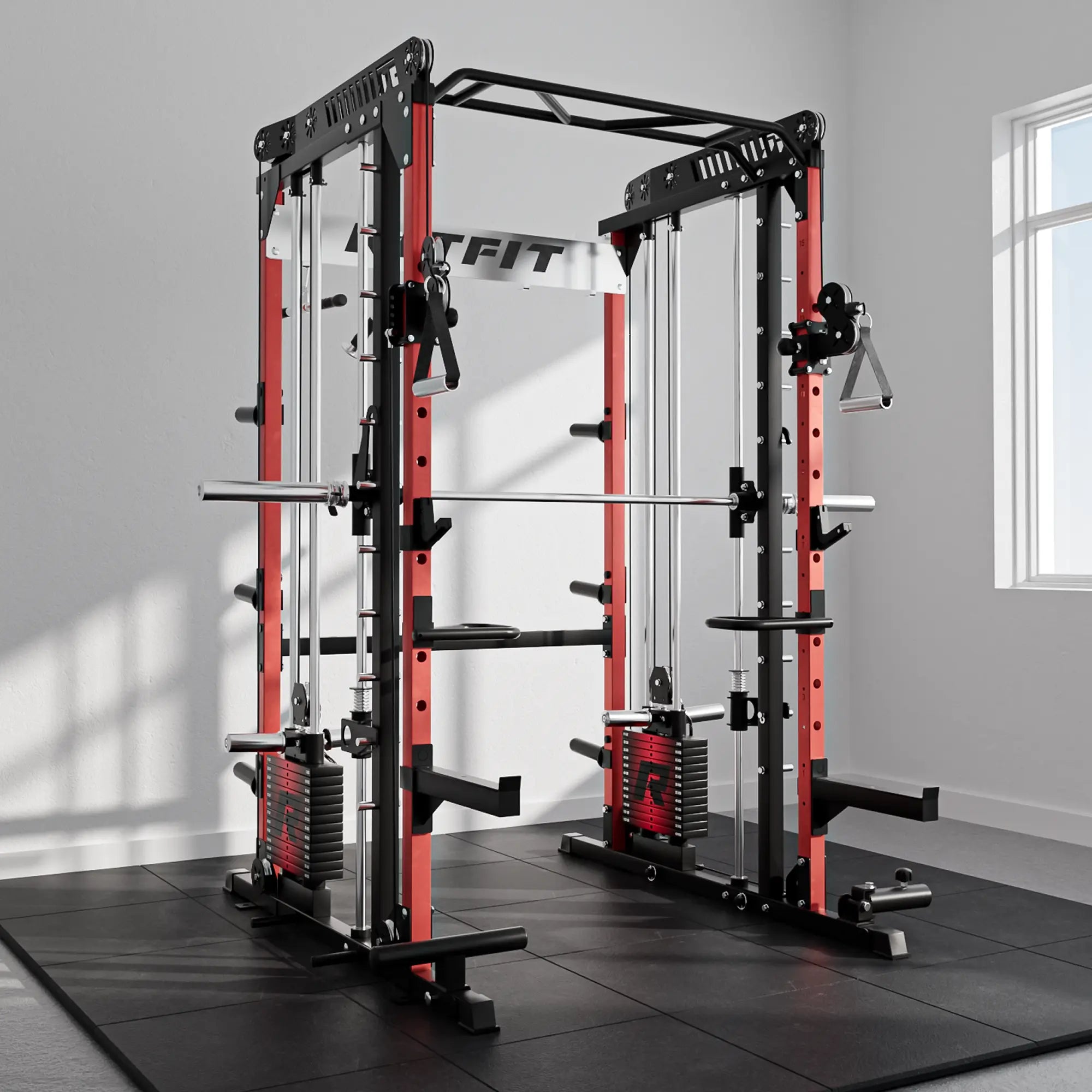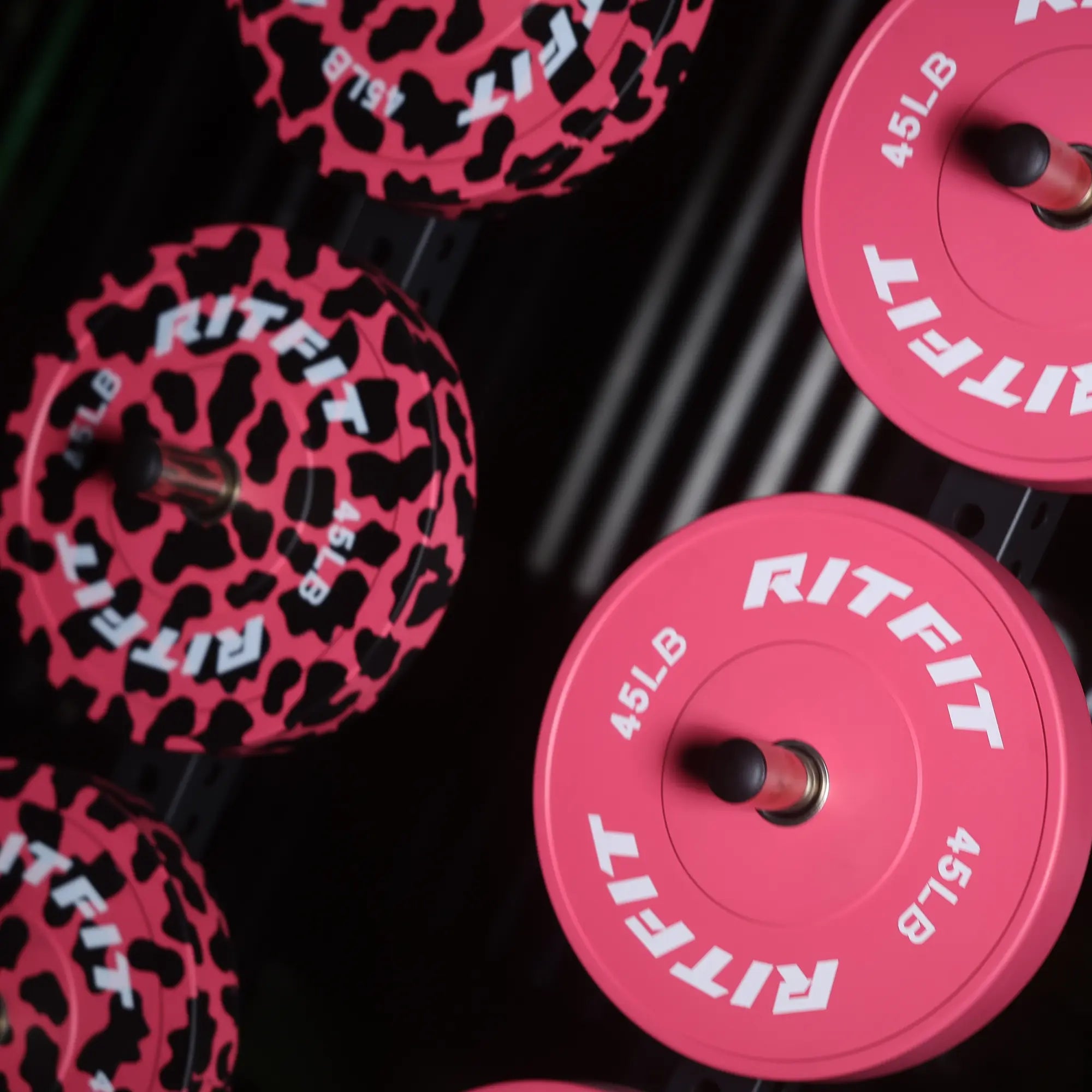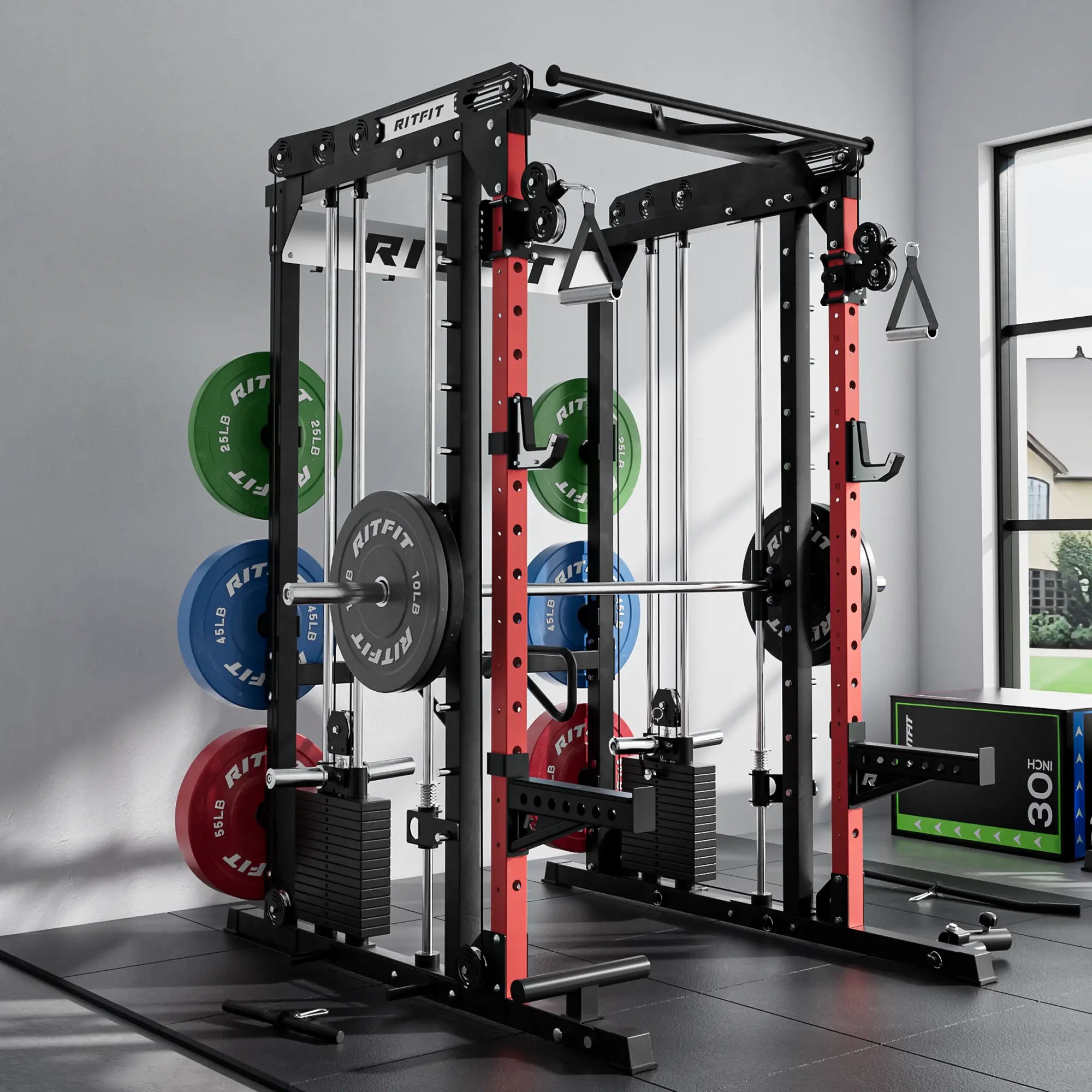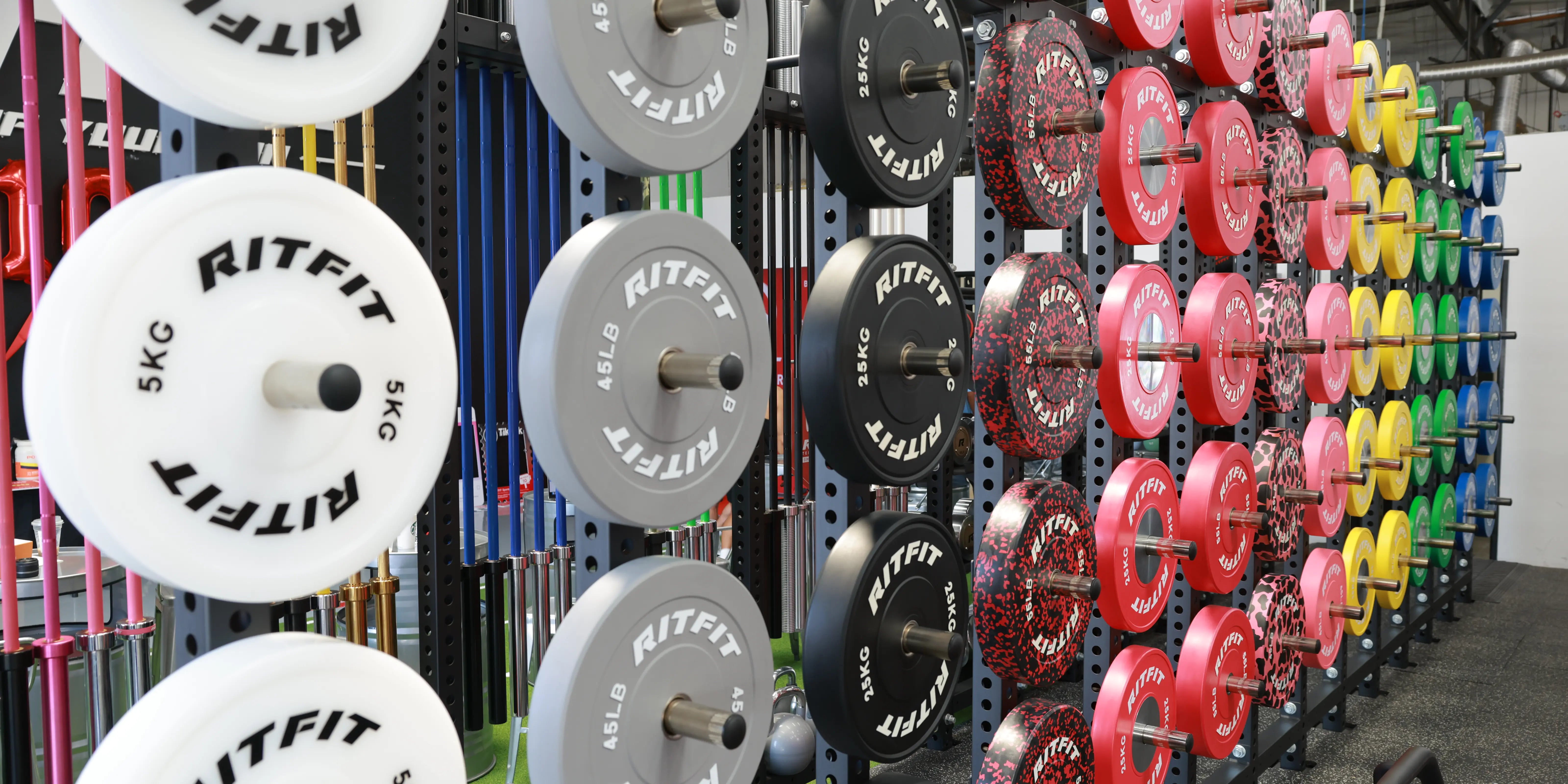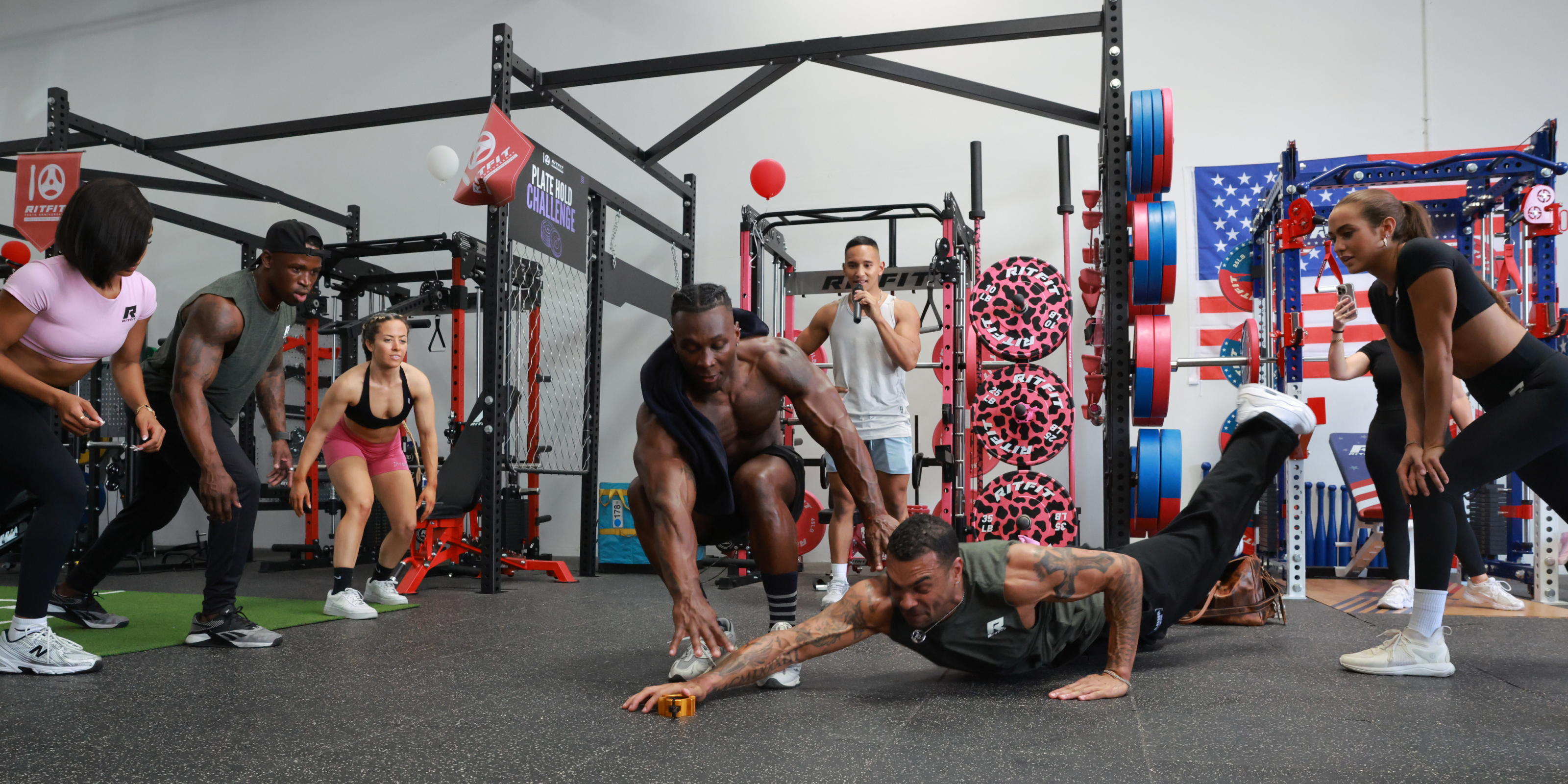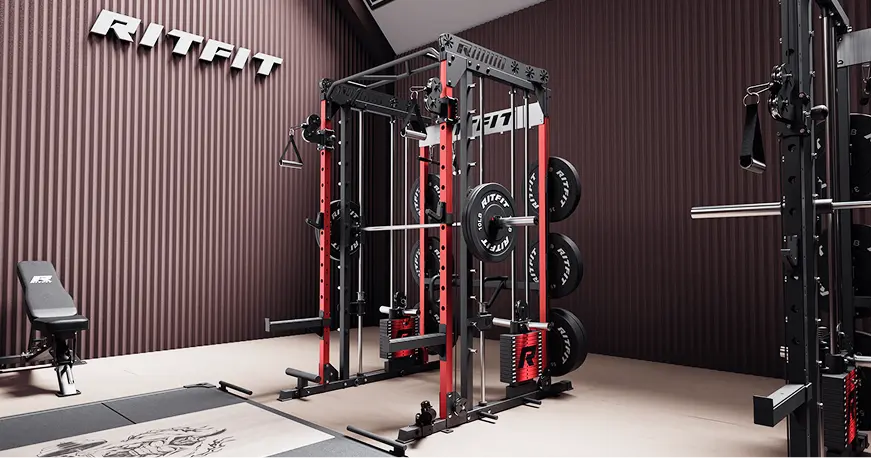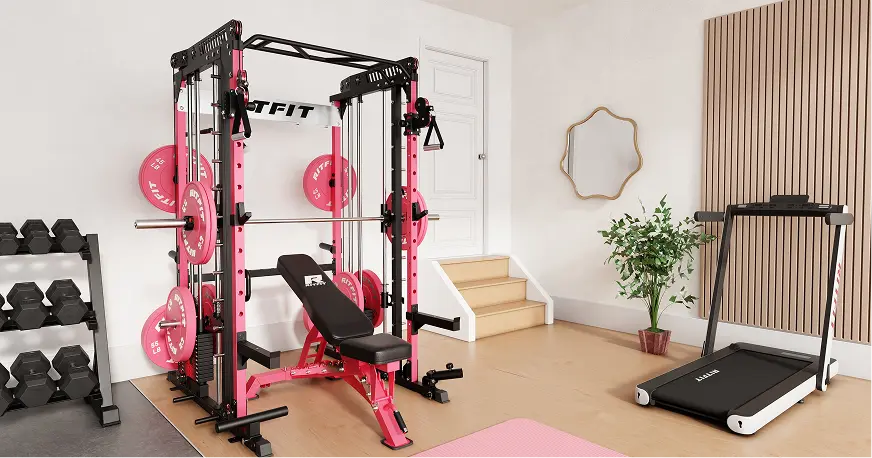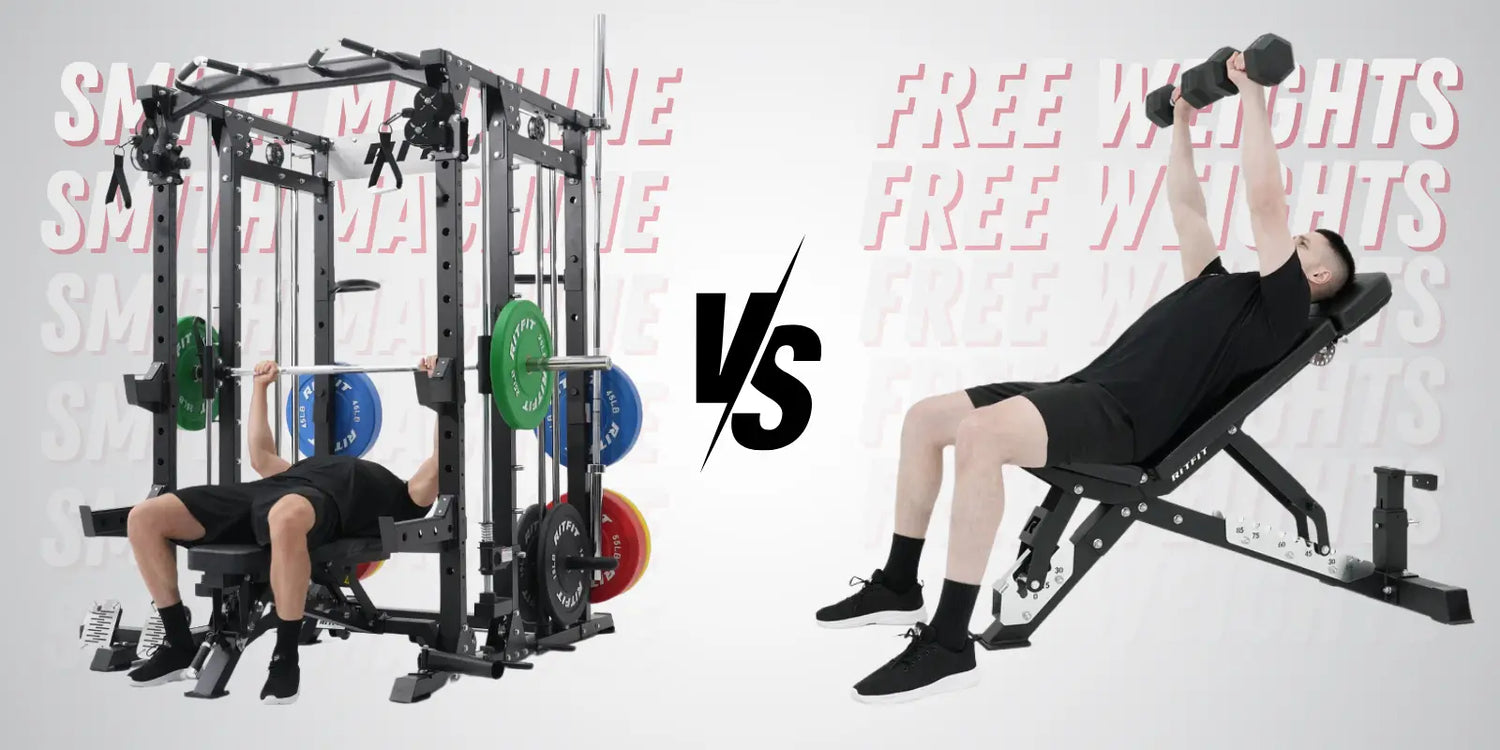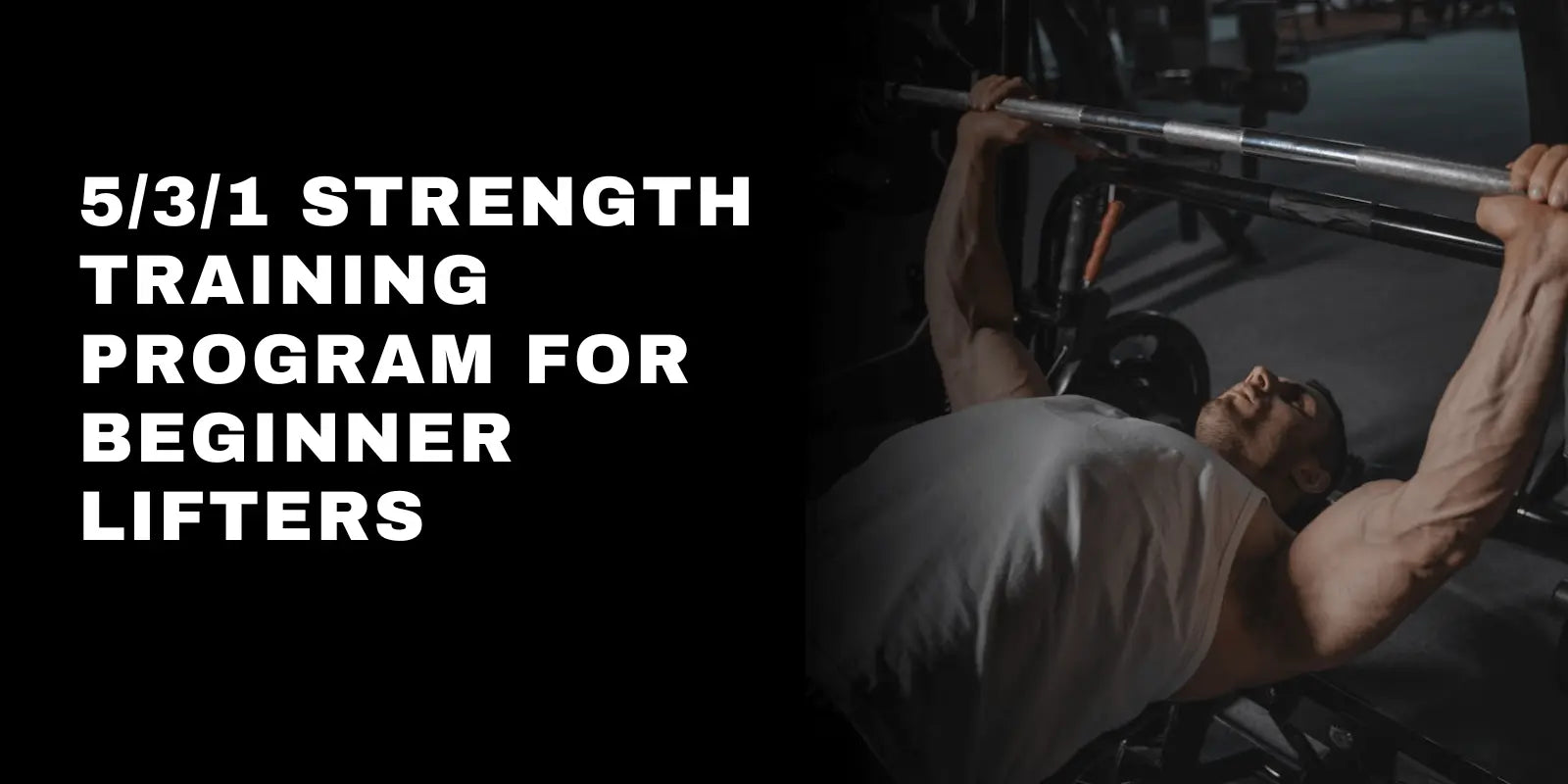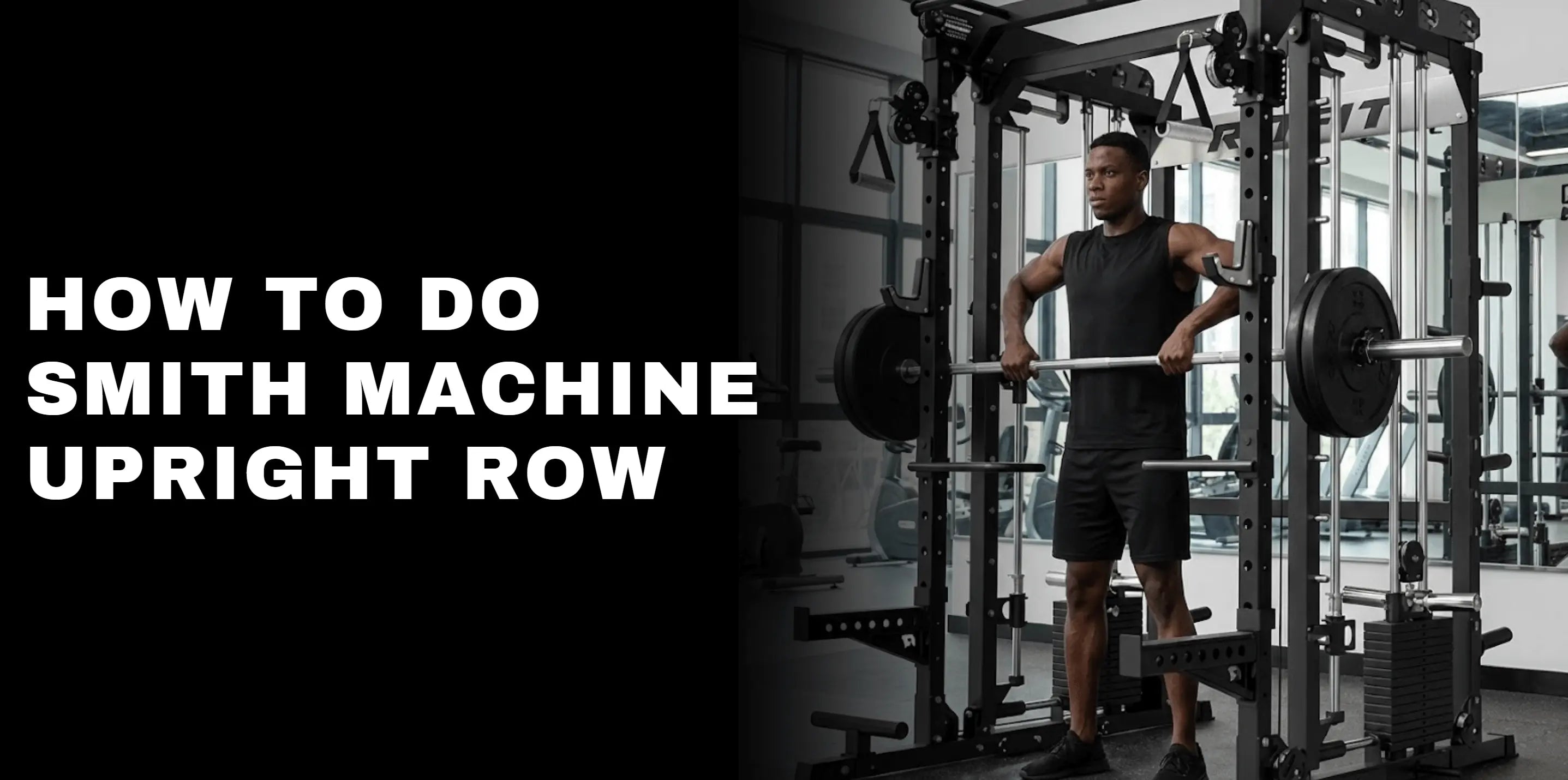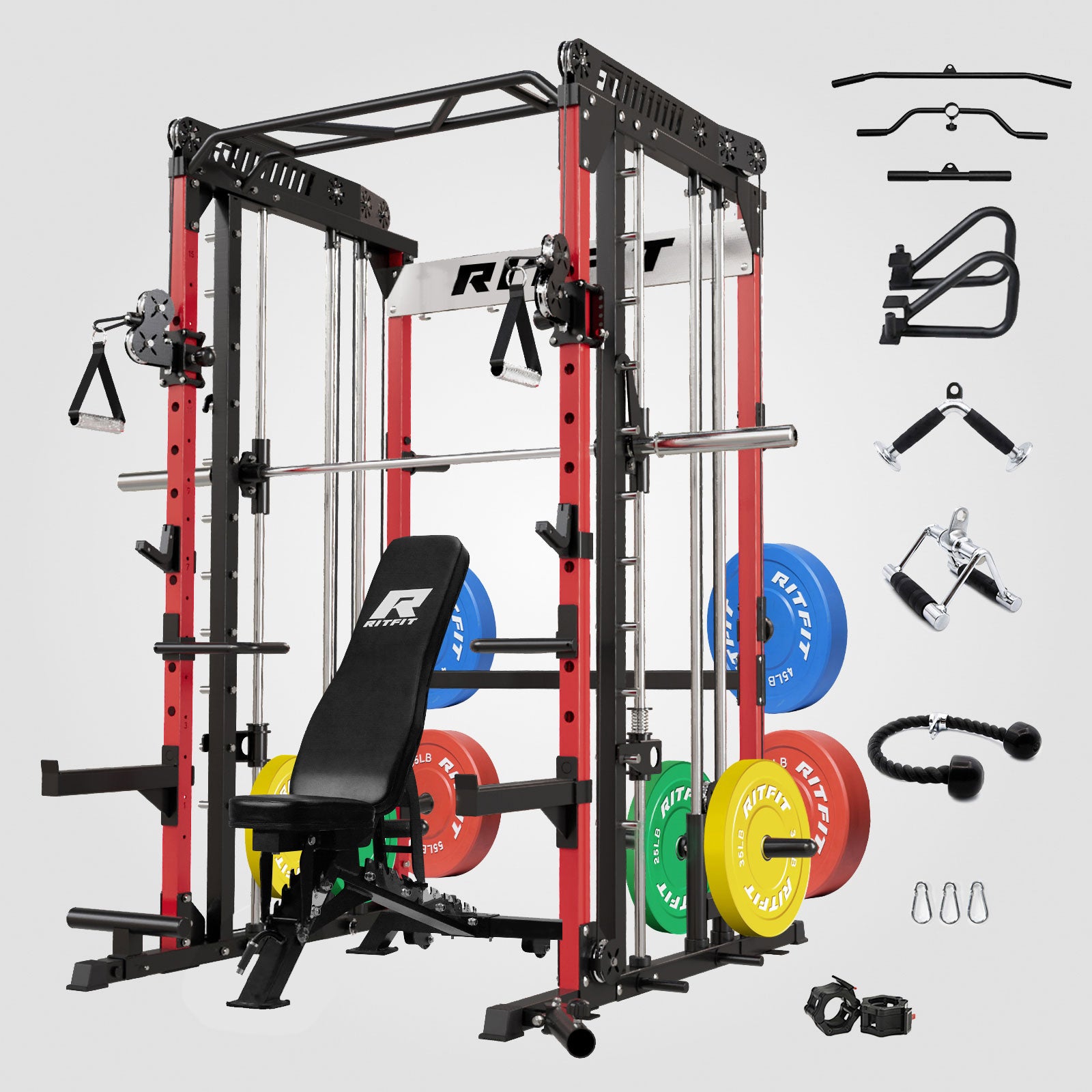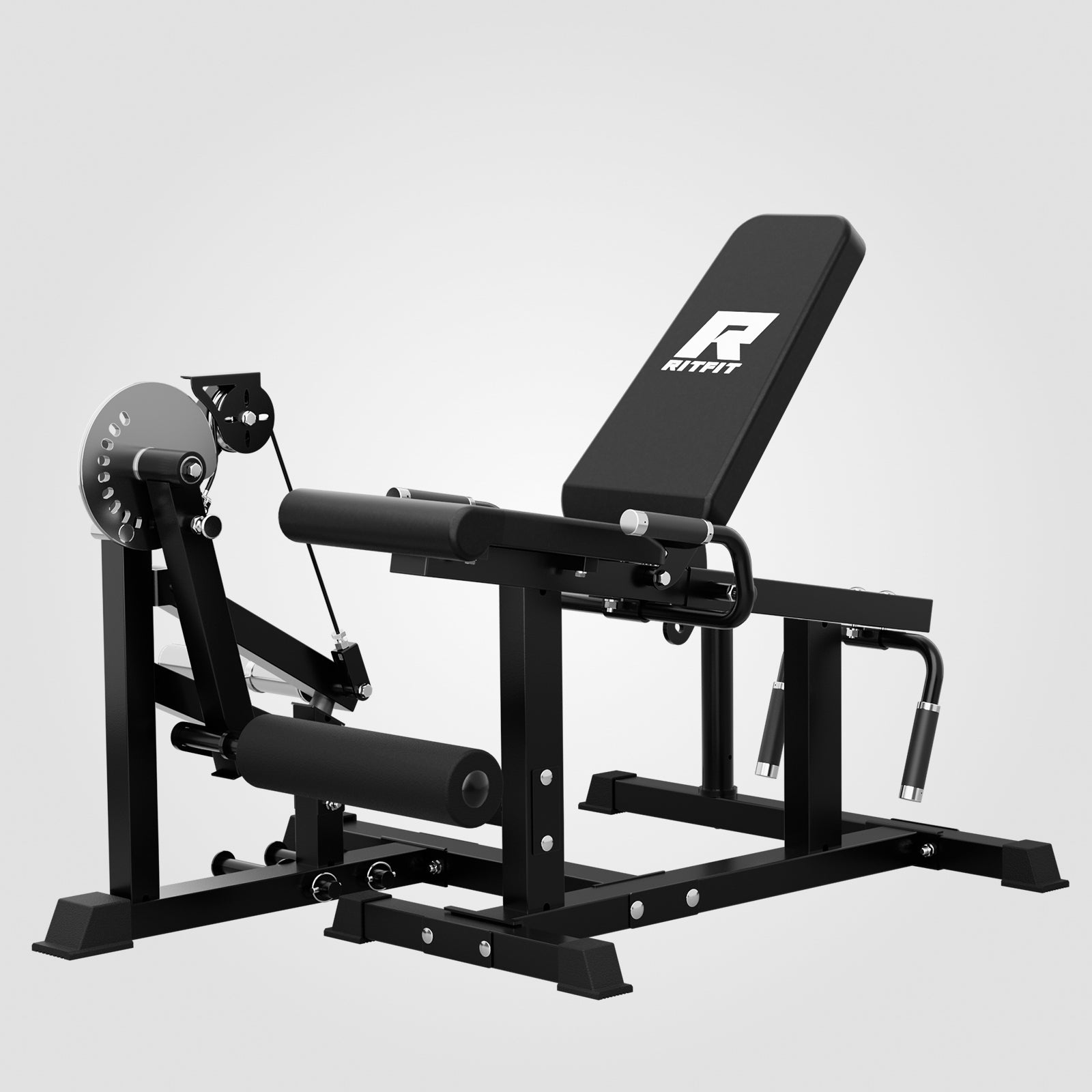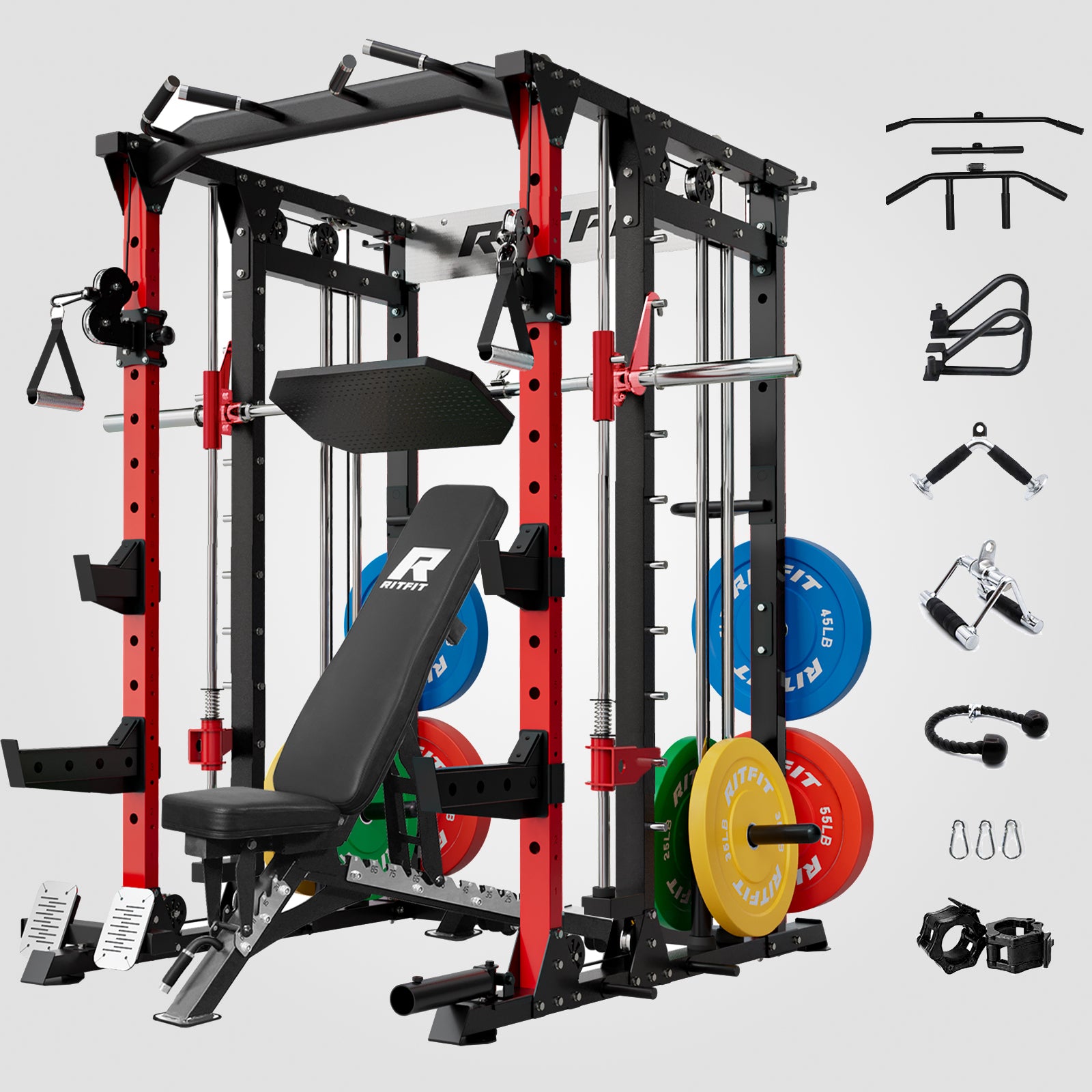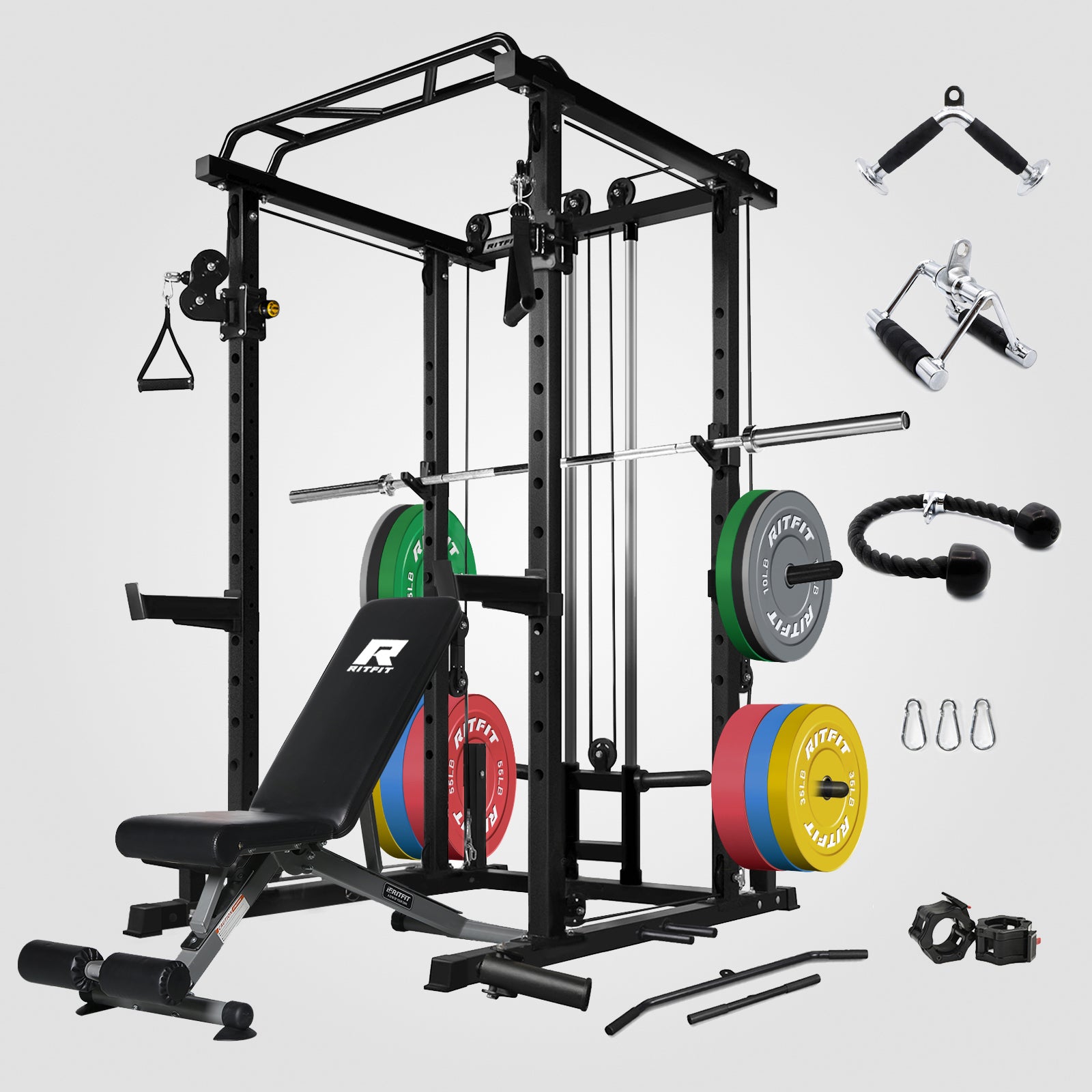You go to the gym, you put in the effort, you get results.
It’s as simple as that.
However, the Internet probably wouldn’t need to exist if there weren’t such a demand for debating the best way to get strong, get toned, and build muscle.
Some people are diehard bodybuilders, some people think powerlifting is the way to go. Others are into “functional fitness,” while some are dedicated “cardio bunnies”.
All of these groups will defend their preferred fitness approach to the death… just like how Smith Machine enthusiasts will argue with free weight-loving trainees until they’re blue in the face.
After all, the Smith Machine vs free weights debate is one of the fiercest in the entirety of the fitness space.
We’re not going to take sides here since we think both approaches are excellent, but if you’re interested in ordering a Smith Machine for your home gym or getting your hands on a barbell and bumper plates set, we want you to be informed before pulling the trigger.
Let’s take a look at how these entities match up with one another; by the time we finish up, you’ll be able to decide which side of the debate you’re on!
The Almighty Smith Machine
The Smith Machine has gone through some pretty impressive changes over the years.
What began as an innovative, yet humble fitness accessory designed to enhance safety and to promote perfect form has evolved into a truly multifunctional piece of training equipment. Today, all-in-one Smith Machines like the Buffalo allow lifters to perform traditional free weight movements, cable pulley movements, and bodyweight exercises in addition to classic Smith Bar exercises.
One can argue that these kinds of Smith Machines aren’t really “vs” free weights; it would be more accurate to say Smith Machines and free weights…and everything else!
Looking at the “classic” Smith Machine elements specifically, there are several similarities with traditional power racks. Both are larger pieces with distinctive uprights and a racked barbell.
This is where things begin to deviate.
The Smith Machine’s bar is designed to follow a predesignated and constant path, ensuring a perfectly vertical ascent and descent. This not only greatly enhances exercise form but also removes much of the effort necessary to balance and stabilize the bar during training.
Smith Machines also possess many interval height setting levels. These are somewhat comparable to a power rack’s J-cups, however, they are constantly present, allowing the bar to be immediately racked if necessary. This is a significant safety feature as this allows the machine to essentially serve as a spotter.
Overall, Smith Machines are excellent options for trainees who are interested in barbell training, but who want to prioritize perfect form and safety with the assistance of their equipment.
Tried and True Free Weights
While there is quite a bit of variety in Smith Machine offerings, the sky is truly the limit when it comes to free weights. Heck, even the Smith Machines we profiled in the previous section allow lifters to execute some different common free weight exercises.
At the most basic level, “free weights” consist of several different common gym implements, with some of the most common being barbells, dumbbells, weight plates, and kettlebells. Unlike the vast majority of fitness machines (to include the “Smith” portion of Smith Machines), free weights are almost entirely supported and stabilized by the trainees. Lifters themselves must balance these weights and, unlike with machines, their exercise form dictates how and where these weights move.
The lack of machine involvement in free weight exercises generally makes them more technically difficult to execute than machine movements, and trainees must perfect their technique if they want to use heavier weights. At the same time, free weights’ lack of extensive hardware requirements generally makes them less expensive than machines, in some cases, a lot less expensive.
Due to the extremely wide variety of gear that falls into the free weights category, it is a little bit tricky to make definitive conclusions about it. Power racks, which are larger pieces of equipment used to facilitate many common free weight exercises, are generally comparable in size to Smith Machines. Small kettlebells and dumbbells are much smaller and can be arranged to take up very little space in the corner of a home gym.
Finally, in many ways, free weights can be exceptional choices for beginner lifters and advanced athletes. The aforementioned dumbbells, kettlebells, and barbells can be loaded with light enough loads for even the most novice lifter to comfortably and safely work on perfecting their form. As lifters advance, they can use this same gear to perform heavier and more technically difficult “expert-level” movements.
Smith Machine vs Free Weights – Head-to-head
We’ve done our best to highlight the key features of Smith Machines and free weights, but we know that sometimes…you just have to make some “apples-to-apples” comparisons. Let’s take a look at how these two stack up in a head-to-head matchup:
-
Smith Machine vs Free Weight Price: The price range for free weights is a bit all over the place, but you’re going to have a tough time finding any free weights that are more expensive than Smith Machines. Even a more expensive power rack like the PPC02 is generally comparably priced to the least expensive Smith Machine, like the PSR05.
-
Smith Machine vs Free Weight Space Requirements: Dumbbells and kettlebells take up minimal space. Barbells and weight plates take up a little bit more, and power racks take up the most space. Power racks and Smith Machines generally have comparable space requirements, and, as such, free weights are collectively accepted to require less space, overall.
-
Smith Machine vs Free Weight Functionality: Smith Machines like the M1 and the Buffalo allow lifters to perform Smith Bar exercises, free weight exercises, bodyweight exercises, and cable pulley exercises, amongst others. Free Weights, on the other hand, can be used for as many exercises as lifters can imagine. Most home gym trainees will opt for more traditional exercises, but a little creativity never hurt anyone…
- Smith Machines vs Free Weights for Beginners: The sheer variety of exercises that lifters can perform with free weights means that there are numerous, low-difficulty movements that every beginner can handle. In contrast, Smith Machine exercises are inherently less difficult than comparable free weight movements, and their fixed barbell paths help beginners as they are learning. Depending on the exercises performed, both options are excellent for new lifters.
Research indicates that while free weights may induce a greater acute hormonal response, significant increases in muscle mass and strength are comparable between free weight and machine training groups. A 2020 study revealed that individuals training with either modality achieved similar long-term adaptations in muscle thickness and maximal strength[1].
It's difficult to crown a definitive champion in this matchup as both options score well in the most important categories.
Smith Machine or Free Weights? Choose your own Fitness Adventure
As we finish up, we hope that it has become clear to you that, in many ways, Smith Machines and free weights aren’t adversaries as much as they are complementary cornerstones of any fitness environment.
At the most basic level, Smith Machines provide an unbeatable level of safety, and you gotta have some free weights (Olympic plates) to load your Smith Machine with.
With that in mind, consider picking up the Buffalo Home Gym Package, which includes one of the top Smith Machines on the market, multiple accessories, a bench, and Olympic weight plates. Throw in a barbell, some dumbbells, and kettlebells, and you’ll have the best combination of free weights and Smith Machine imaginable!
Reference
- Schwanbeck SR, Cornish SM, Barss T, Chilibeck PD. Effects of Training With Free Weights Versus Machines on Muscle Mass, Strength, Free Testosterone, and Free Cortisol Levels. J Strength Cond Res. 2020;34(7):1851-1859. doi:10.1519/JSC.0000000000003349

